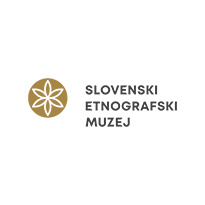Insert page Colour Schemes of Ceilings
The 50th insert from the album The Decoration of the Palace Buildings in Beijing. It shows the colour schemes of the decorative patterns on the ceilings of the Hall of Preserving Harmony (Baohedian 保和殿) and the Hall of Supreme Harmony (Taihedian 太和殿) in the Forbidden City (Gugong 故宫 or Zijincheng 紫禁城) in Beijing. The two ceilings are very similar. In the Hall of Preserving Harmony, the dragon at the centre of the blue square and the rose designs in its corners are yellow, whereas they are multi-coloured in the Hall of Supreme Harmony. The illustrations are captioned in Japanese and English which identifies them. Both languages also state that the whiskers of the dragon are white.
These are two of the three halls that together form the outer courtyard of the Forbidden City. The Forbidden City is divided into the southern, outer courtyard, which was used mainly for ritual purposes, and the northern, inner courtyard, where everyday state business took ... more
The 50th insert from the album The Decoration of the Palace Buildings in Beijing. It shows the colour schemes of the decorative patterns on the ceilings of the Hall of Preserving Harmony (Baohedian 保和殿) and the Hall of Supreme Harmony (Taihedian 太和殿) in the Forbidden City (Gugong 故宫 or Zijincheng 紫禁城) in Beijing. The two ceilings are very similar. In the Hall of Preserving Harmony, the dragon at the centre of the blue square and the rose designs in its corners are yellow, whereas they are multi-coloured in the Hall of Supreme Harmony. The illustrations are captioned in Japanese and English which identifies them. Both languages also state that the whiskers of the dragon are white.
These are two of the three halls that together form the outer courtyard of the Forbidden City. The Forbidden City is divided into the southern, outer courtyard, which was used mainly for ritual purposes, and the northern, inner courtyard, where everyday state business took place. The illustrations are very similar. The central dragon motif has associations with power and good fortune, and is therefore also traditionally a symbol of the emperor. (In China, the dragon is not considered an evil creature that kidnaps princesses.) The dragon in the illustrations has five claws, which is particularly characteristic of a dragon that represents imperial power and that could be used as a symbol only by the emperor, his sons and the highest nobles.
The two halls are similar in other elements as well, not only in the ceiling decoration. Both are rectangular wooden buildings with a throne and, as part of the outer court of the Forbidden City, had a symbolic rather than a practical function. The Hall of Preserving Harmony was used to prepare for ceremonies, and it was also a place where examinations were held for state officials, who were selected in China on the basis of their examination performance rather than their noble birth. However, the Hall of Supreme Harmony is the traditional centre of imperial power, the largest hall in the Forbidden City, and the largest surviving wooden building in modern China. In the Ming Dynasty (1368–1644) it was still used for state affairs, and from the Qing Dynasty (1644–1912) it was used only for important state ceremonies such as the enthronement of emperors or imperial weddings. (JB)




































Do you have a comment or additional information about the subject?